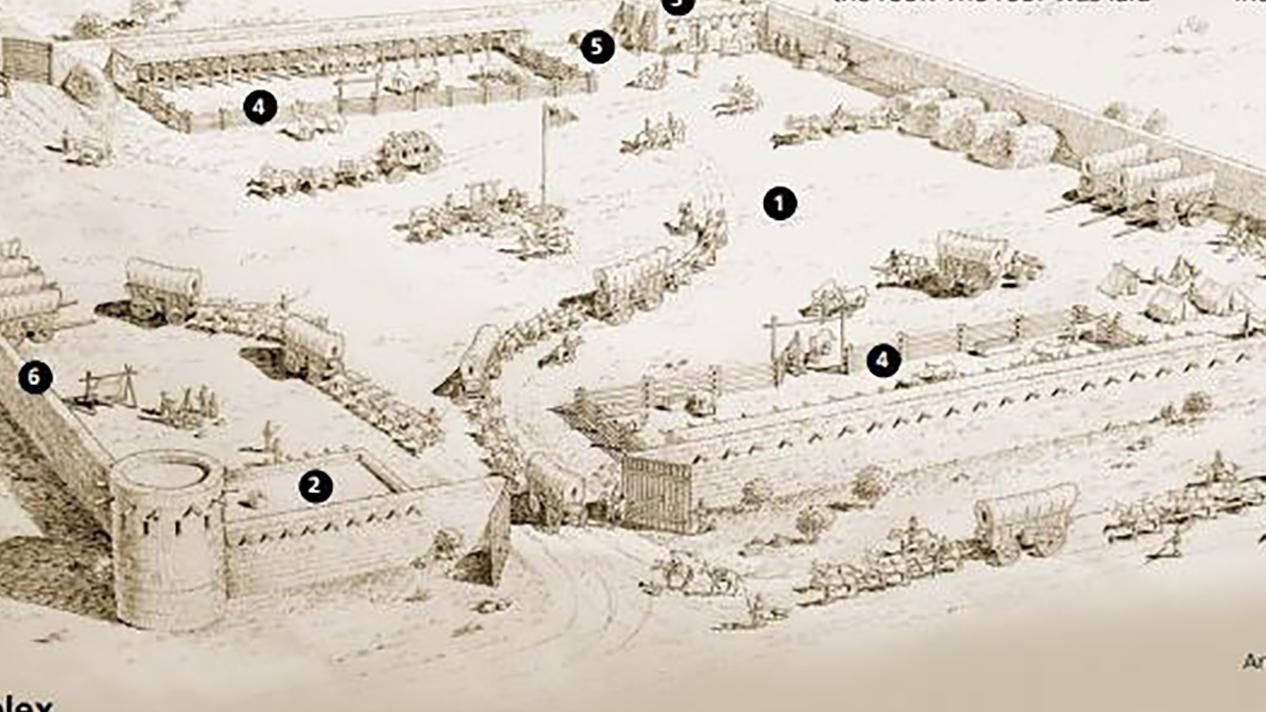Last updated: January 13, 2023
Place
Cimarron Crossing Park

NPS Image, Exhibit described in content.
Playground
The Santa Fe Trail passed by where Cimarron Crossing Park is now, bringing people and goods along the trading route. Just to the south, the Arkansas River formed the border with Mexico. Traders and travelers required accommodations, supplies, and protection. The Ranch at Cimarron Crossing was established in 1866 by William and Frank Hartwell and several other investors to meet those needs. Later, it was operated by Robert Wright, one of the founders of Dodge City, and A.J. Anthony. At full force there were 12 armed men at the Cimarron Crossing station.
The ranch sat in the midst of a vast open plain, covered only with cactus on the higher ground and with grass in the river bottoms as high as a man on horseback. Buffalo could be seen in any direction, and for an hour at a time the river might be heard roaring in the night from the crossing of great herds. Wolves could be heard from darkness until dawn.
Many Native Americans, such as the Cheyenne, viewed settlements such as the ranch as intrusions onto their homelands. Tension between settlers, traders, and the military increased, including an attack on a wagon train crossing here in June 1867. In 1868, the ranch was abandoned due to the continuous threat of attack from Native Americans.
Site Information
Location (Cimarron Crossing Park is located on the south side of Cimarron, KS, along the banks of the Arkansas River.)
The Cimarron City Park is one of the most beautiful parks in Southwest Kansas. Located on the banks of the Arkansas River, the park plays host to a variety of community functions. The park also has two baseball/softball diamonds and a Tee-ball field. A new walking track has been added around the park that is a half-mile in length.
Cimarron Crossing Ranch Interpretive Exhibit
"Building Materials: The closest timber for building was 20 miles away. Much of the ranch was turf, including the roof. The roof was laid first of poles, then a layer of buffalo hides and gunny sacks and upon this an eight inch course of dirt or sod.
The Ranch Complex: Every part of the building was not only secure against fire and weather, but also proof against bullets. It included: the kaavl (corral) was 100 steps square, the main building was 40 by 16 feet and joined a two-story round tower, the corner of the kaavl was a stage driver's lobby and similar tower, the remainder of this enclosure furnished stables for mules, enough water in barrels to withstand a siege, walls that were two feet thick."
